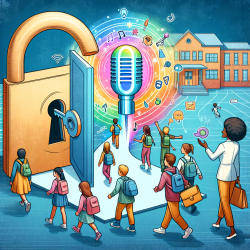As mental health professionals working in schools, you are on the front lines of supporting the emotional and psychological well-being of children. The landscape of therapy is evolving, and one of the most exciting advancements is the rise of virtual therapy. At TinyEYE, we believe that online therapy services are not just a temporary solution but a transformative approach that can unlock the potential of countless students.
In this blog, we will explore the benefits, challenges, and future of virtual therapy in schools, particularly focusing on how it can revolutionize online speech therapy and other therapeutic services for children.
Benefits of Virtual Therapy
Virtual therapy offers a myriad of benefits that traditional in-person therapy may not be able to provide:
- Accessibility: Virtual therapy removes geographical barriers, allowing students in remote or underserved areas to receive high-quality therapeutic services.
- Flexibility: Scheduling becomes more manageable, as sessions can be conducted from the comfort of the student's home or school, fitting more seamlessly into their daily routines.
- Cost-Effective: Reduced travel and overhead costs make virtual therapy a more affordable option for schools and families.
- Engagement: Interactive tools and digital platforms can make therapy sessions more engaging for children, who are often more comfortable with technology.
Challenges and Solutions
While the benefits are compelling, virtual therapy does come with its own set of challenges:
- Technology Access: Not all students have reliable internet access or the necessary devices. Schools can address this by providing equipment and internet subsidies where needed.
- Privacy Concerns: Ensuring the confidentiality of sessions is paramount. Secure platforms and adherence to privacy laws like HIPAA can mitigate these concerns.
- Personal Connection: Building a rapport with students through a screen can be challenging. Therapists can overcome this by incorporating more interactive and personalized elements into their sessions.
The Future of Virtual Therapy
The future of virtual therapy is bright, with continuous advancements in technology and methodology paving the way for more effective and widespread adoption. Here are some trends to watch:
- AI and Machine Learning: These technologies can provide personalized therapeutic interventions and real-time feedback, enhancing the efficacy of online therapy.
- Telehealth Integration: Seamless integration with other telehealth services can offer a more holistic approach to student well-being.
- Enhanced Training: Ongoing professional development for therapists in virtual settings will ensure high standards of care.
Conclusion
At TinyEYE, we are committed to harnessing the power of virtual therapy to create a more inclusive and effective therapeutic environment for children. We believe that by embracing these innovations, mental health professionals in schools can make a lasting impact on the lives of their students. The future is now, and it is virtual.
We invite you to join us in this exciting journey. Together, we can unlock the full potential of every child.










